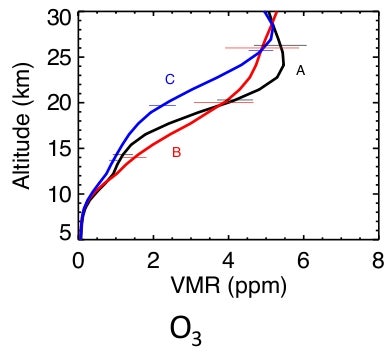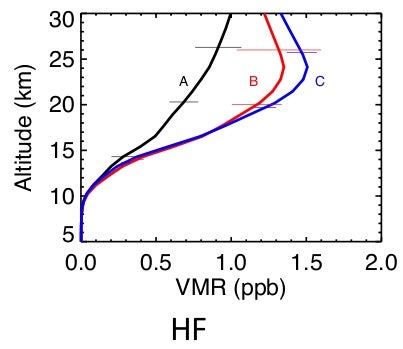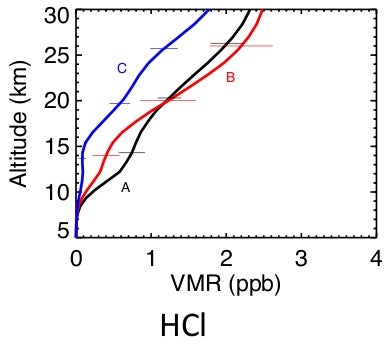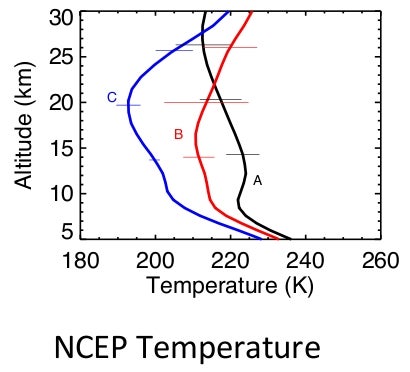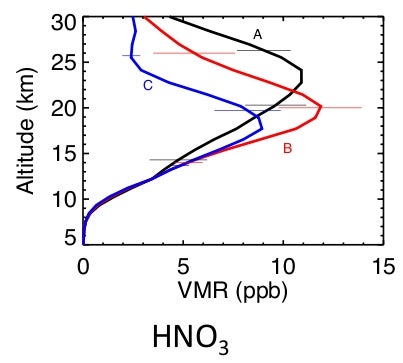Thule Observations
New FTIR Installation 2015
In spring 2015 a new Bruker 125HR FTIR was installed at the Thule site. That replaced the initial instrument installed in 1999 with a state of the art instrument. The new FTIR has much improved spectral figures of merit including wider bandwidth, faster dual channel acquisition, a much higher SNR and more stable response function. The installation at the same site is shown below.
At the same time a new solar tracker was also installed. The earlier tracker system that was comprised of two separate trackers: one for ephemeris based solar pointing and the second for dynamic tracking of the solar image had served well for 15 years but like the initial FTIR was becoming overly burdensome to maintain. The new tracker designed and built with NCAR ACOM & DFS engineering staff has a 6" throughput for additional instrumental capacity, contains both an ephemeris pointing capability and a 2 Mpixal camera installed at the 125HR entrance aperture and an update rate of 10 Hz to maintain a constant solar image to within 9 µradians. The tracker installation is shown below left and tracking close to the horizon on the right.
Winter / Spring 2011 Arctic O3 loss
Since 1999 a continuous record of many important chemical species have been measured at the NDACC / NCAR FTS observations site in Thule Greenland. Springtime measurements of O3 and several chlorine and nitrogen reservoir species as well as stratospheric tracers stood out and revealed the largest chemical O3 depletion in the Arctic on record. These observations were published in the journal ARCTIC, VOL. 65, NO. 3 (SEPTEMBER 2012) P. 339 – 343 and can be found here.
Observations of record-breaking ozone depletion in the 2010-2011 Arctic spring have been made at 76°N in Thule, Greenland. The ozone total column amount of 290 DU measured on 18 March 2011 is the lowest value from the 12y observation record and represents an ozone depletion of up to 48% of a typical March column. Simultaneous observations of O3, HF, HCl, HNO3 and ClONO2 demonstrate strong subsidence and substantial conversion of chlorine from its normal reservoirs.
Based on observations from Arctic sunrise through 19 March over the 12 year span 2000 through 2011 made at the NDACC site in Thule, Greenland, the 2011 Arctic springtime stands out as an exceptionally cold winter characterized by substantial ozone loss of up to 45% of the mean total column relative to the previous 10 years when accounting for subsided Arctic air. Consistent with this ozone depletion and ongoing cold temperatures, we observe substantial loss of HCl throughout the stratosphere and low total column of ClONO2 through March prolonging activated Cl contributing to large the O3 loss. The observations of HNO3 showed loss that removed nitrogen that in a more typical year would be integral in deactivating Cl by producing ClONO2. Relative chemical loss was estimated using the passive tracer HF that showed a marked redistribution downward of the HF VMR profile indicating very active descent within the vortex.
Percentage depletion in individual layers and total column
| Column | O3 | HNO3 | HF | HCl | ClONO2 | HCl+ClONO2 |
|---|---|---|---|---|---|---|
| 09-16km | 32.4 | 8.3 | -13.1 | 84.7 | ||
| 16-23km | 60.2 | 46.2 | -43.6 | 73.2 | ||
| 23-30km | 38.7 | 78.7 | -14.2 | 58.8 | ||
| Total | 45.4 | 34.7 | -25.0 | 70.8 | 6.8 | 51.8 |
This is calculated as the percent difference of the column of the gas of interest ratioed with HF in March 2011 compared to the HF ratioed column of the gas of interest in March averaged over all other years. Column labeled HF is the percent difference of the column in March 2011 compared to the average in March over all other years.
Profiles
|
|
|
|
|
|
Profiles of several species and temperatures showing the dramatic state of the 2011 Arctic Winter/Spring vortex and O3 loss over Thule, Greenland. Curve A 2000-2010 mean March outside vortex (2.5PVU @PT=440K). Curve B 2000-2010 mean March inside vortex (3.2PVU @PT=440K) and Curve C mean March 2011 (all inside). Horizontal bars are the standard deviation of observations at 3 select altitudes. |
|
